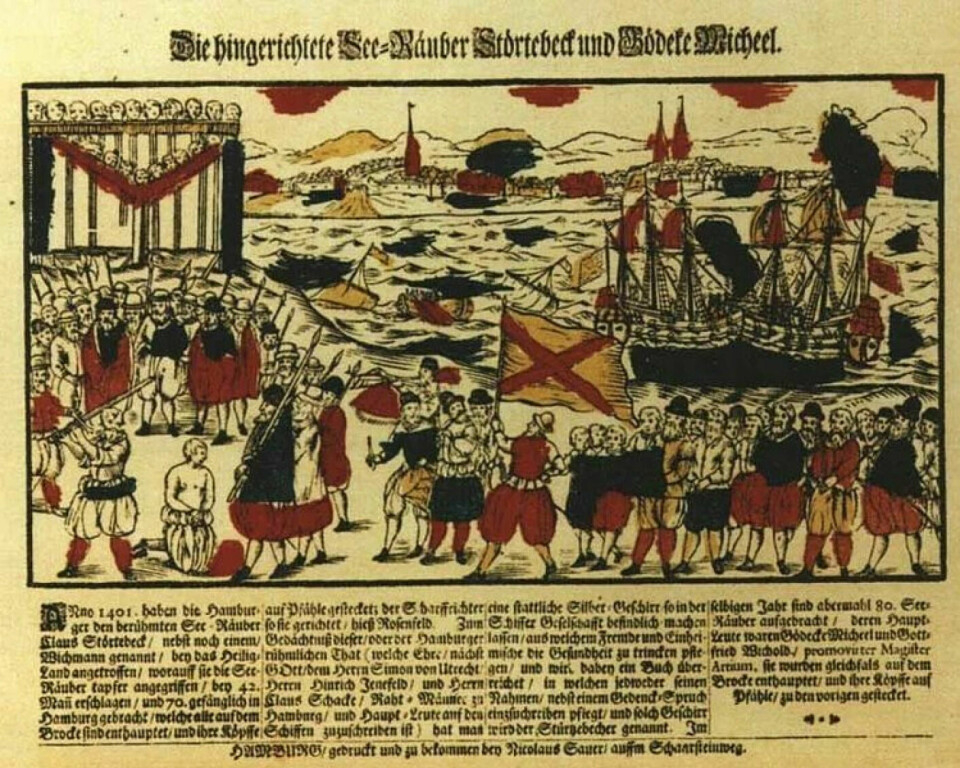
This Norwegian-Swedish cannon could be one of the oldest in Europe
The cannon was loaded and ready for battle when it ended up at the bottom of the sea 600 years ago off what was an important medieval Norwegian city.
An old ship cannon was found by a recreational diver at a depth of 20 metres in 2001 off the coastal town of Marstrand in Sweden.
It bears witness to a troubled time for both seafarers and coastal populations, according to a press release from the University of Gothenburg.
In a new study, researchers discuss the development of weapon use both on land and at sea.
They assume the cannon is from a sunken ship.
Gunpowder residue found
Researchers believe the cannon was used as a weapon on the ship, meaning it is a so-called shipboard cannon.
The weapon still had a charge in the powder chamber when it was found. The cannon was therefore ready for battle when it ended up at the bottom of the sea 600 years ago.
Thanks to the preserved gunpowder residues, it was also possible to date the find using the carbon-14 method.
The result shows that the Marstrand cannon most likely dates from the 14th century, making it one of the oldest artillery weapons found in Europe.
Most viewed
A surprising discovery
“This is very exciting!” Bjørn Bandlien says. He is a professor at the University of South-Eastern Norway.
He is pleasantly surprised that the old shipboard cannon was found in what was once Norwegian waters.
Marstrand was Norwegian in the Middle Ages. In fact, it was one of the richest Norwegian cities at that time.
“Marstrand deserves more attention as an important Norwegian city in the Middle Ages,” Bandlien argues.
It was founded in the 13th century, mainly because of the rich herring fisheries, and was granted city privileges in 1442.
The old cannon could have been on board a Norwegian ship that protected the herring export, but it could also have been on an enemy ship in the turbulent times at the end of the 14th century, Bandlien points out.
Conflicts at sea
In the 14th century, there was much strife between the major northern European maritime powers, namely the Hanseatic League, England, and Holland.
“Trade was highly exposed in these conflicts, and hijacking and seizures of ships and cargo were common,” Staffan von Arbin writes in an email to sciencenorway.no. He is a marine archaeologist at Gothenburg University.
He is one of the researchers behind the new study.
“In 1368, a coalition consisting of, among others, Sweden, Mecklenburg, Holstein, and several Hanseatic cities attacked the southern Norwegian coast, engaging in burning, looting, and pillaging,” Arbin explains.


Attack on Marstrand
Marstrand was one of the towns that was burned.
“The ship to which the cannon belonged could have been part of this attacking fleet. But it could also be from a completely different conflict,” according to Arbin.
The sea was an arena for war and misery, which is why several of the ships were equipped with weapons such like shipboard cannons.
“Living the life of a sailor in the 1300s was undoubtedly fraught with danger and hardship. Accidents, shipwrecks, and diseases were common, and the risk of being attacked by enemy ships and pirates was very real,” Arbin writes.
Plundered by pirates
In 1393, another popular Norwegian port city was plundered by German pirates, namely Bergen. Several ships outside the bay were smashed to splinters when large pirate ships sailed straight into them. The pirates burned buildings, stole belongings, and killed residents.
“It was particularly in the 1390s and the beginning of the 1400s that the so-called Victual Brothers wreaked havoc,” Bjørn Bandlien says.
The Victual Brothers were a group of pirates who sailed and plundered in areas of the Baltic Sea, especially in the years 1391 to 1398. They were also the ones who plundered Bergen several times.
“Many written documents bear witness to pirate attacks along the Norwegian coast. The Victual Brothers attacked and plundered Marstrand's harbour at least twice during the late 14th century,” Staffan von Arbin confirms.
Was it perhaps these pirates that the cannon was intended to protect Norwegians from? Or was it the pirates themselves who were equipped with cannons?

Not a particularly good cannon
When researchers took a closer look at the shipboard cannon, it turned out not to be very robust.
A chemical analysis of the metal used in the casting shows a copper alloy containing around 14 per cent lead and only small amounts of tin.
This alloy is far from optimal for cannon casting, according to the Swedish researchers.
The cannon would most likely have broken if it had been used a lot.
“Clearly, the person who cast the cannon didn’t have the necessary knowledge and understanding of the properties of different copper alloys,” Arbin writes.
———
Translated by Alette Bjordal Gjellesvik.
Read the Norwegian version of this article on forskning.no
References:
von Arbin et al. The Marstrand Cannon: The earliest evidence of shipboard artillery in Europe?, The Mariner's Mirror, vol. 109, 2023. DOI: 10.1080/00253359.2023.2225311
Piratkrigene i Bergen (The pirate wars in Bergen), National Library of Norway, 2021.





































